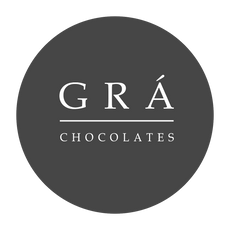
Irish Soda Bread

Everyone loves the comforting aroma of freshly baked bread. But the perceived complexities of yeast, kneading, and the ever-present "gluten talk" can often deter even the most enthusiastic home cooks. But don’t worry! Irish Soda Bread is the easiest bread you can make, requiring no kneading, no proving, and minimal waiting time. The entire process, from mixing to baking, takes less than an hour, meaning you can be enjoying a warm slice in no time.
Unlike yeast-leavened breads, soda bread relies on a simple chemical reaction for its rise. It’s a bit of kitchen chemistry at its finest. Four basic ingredients – flour, salt, bread soda (baking soda), and buttermilk – are all you need. The magic happens when the lactic acid in the buttermilk reacts with the alkaline bread soda, creating tiny carbon dioxide bubbles that give the bread its characteristic light and airy texture.
Traditionally, soda bread is made with soft flour, either white, wholemeal, or a mix of the two. High-protein flours like strong bread flour are avoided, as the desired texture is light and tender, not chewy. This is also why we don’t knead soda bread; we want to prevent the formation of gluten strands, which would result in a tougher loaf. Interestingly, Ireland's climate isn't ideal for growing strong wheat, making soft wheat more readily available and further cementing soda bread's place in our cuisine. Very soft flour would struggle to form the necessary gluten structure for yeast breads to trap the carbon dioxide produced by the yeast.
My granny has shared stories of her mother baking soda bread on a griddle pan over a turf fire. The bread would take on a subtle smoky flavour from the embers. The dough would be placed on the hot griddle or in a crock pot, covered with a lid, and then topped with hot embers to ensure even cooking. Imagine the aroma!
While the classic soda bread uses just flour, salt, bread soda, and buttermilk, variations abound. Dried fruits, treacle (molasses), or eggs were often added for richness and sweetness. Fruit-studded soda bread, sometimes known as “Spotted Dog,” is a brilliant example of an old-fashioned pudding-style bread, famously revived by Darina Allen at Ballymaloe Cookery School. The beauty of soda bread is its adaptability; you can add almost anything – cheese, herbs, leftover cooked meats – making it a fantastic way to use up odds and ends or experiment with new flavour combinations. I’m particularly fond of adding treacle, Guinness, and a mix of seeds to mine.
The classic image of soda bread is a round loaf with a deep cross cut into the top. This cross wasn't just decorative; it had superstitious significance, believed to "let the fairies out" or ward off evil spirits and protect the household. In Northern Ireland, however, soda bread is often baked in a more flattened shape and cut into wedges, sometimes still cooked on a griddle.
Such is the importance of this simple bread that there’s even a Society for the Preservation of Irish Soda Bread, dedicated to protecting this national culinary treasure and encouraging people to connect with their Irish roots by learning to bake this traditional loaf.

Quick and Easy White Soda Bread
This recipe delivers a rustic and delicious soda bread in under an hour.
Yields: 1 loaf Prep time: 10 minutes Cook time: 45-50 minutes
Ingredients:
-
350g plain flour
-
100g rolled oats (porridge oats), plus extra for topping
-
1/2 tsp light brown sugar (optional, for a touch of sweetness)
-
1 tsp salt
-
1 tsp baking soda (bread soda)
-
400ml buttermilk (or kefir, or a mixture of milk and lemon juice/vinegar – see note below)
-
50g unsalted butter, melted
Instructions:
-
Preheat the Oven: Preheat your oven to 250°C. Grease or line your baking tin with parchment paper.
-
Combine Dry Ingredients: In a large mixing bowl, sift (if using) the flour, oats, sugar (if using), salt, and baking soda together. This helps to distribute the baking soda evenly and prevents lumps. Make a well in the center of the dry ingredients.
-
Mix the Dough: Pour the buttermilk and melted butter into the well. Using one hand (this helps prevent overmixing), quickly and gently mix the ingredients together until just combined. The dough should be soft and shaggy, but not overly sticky or wet. It's okay if there are some dry patches of flour remaining. Do not overmix.
-
Shape and Bake: Turn the dough out onto a lightly floured surface. Gently shape it into a round disc, about 2-3 inches thick. Place the dough in the prepared baking tin.
-
Score and Top: Using a sharp knife or a serrated knife, cut a deep cross (about 1 inch deep) on the top of the loaf. This helps the bread bake evenly. Sprinkle the top of the loaf with extra rolled oats.
-
Bake: Bake in the preheated oven for 15 minutes, then turn down the temperature of the oven to 200°C for 30 minutes or until the loaf is golden brown and sounds hollow when tapped on the bottom. A skewer inserted into the center should come out clean.
-
Cool and Serve: Remove the bread from the tin and let it cool completely on a wire rack before slicing and serving.
Serving Suggestions:
Serve warm or at room temperature with butter, jam, cheese, or alongside soups and stews.
I served mine warm with some Irish butter and my father’s Crab Apple Jelly! Truly delicious!

Thanks for reading Grainne’s Substack! Subscribe for free to receive new posts and support my work.


